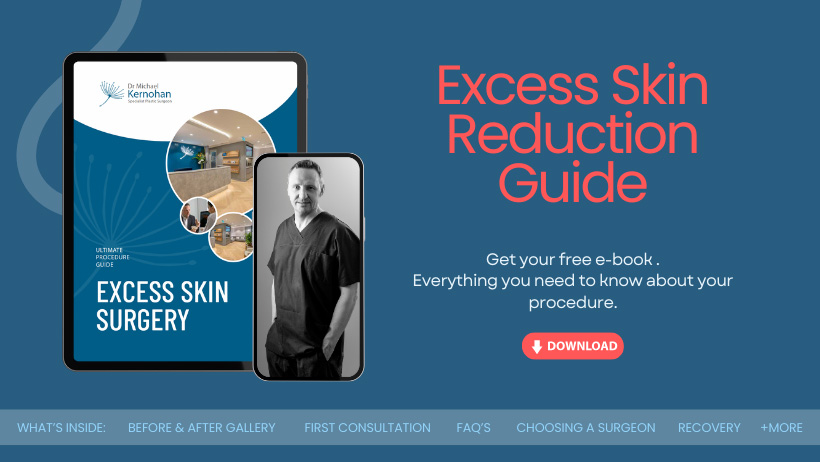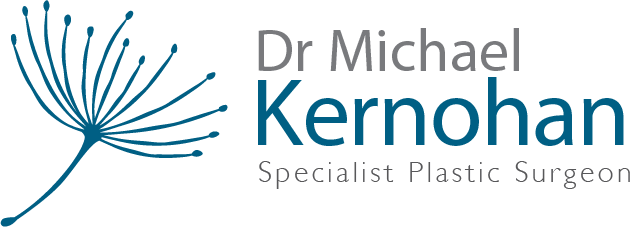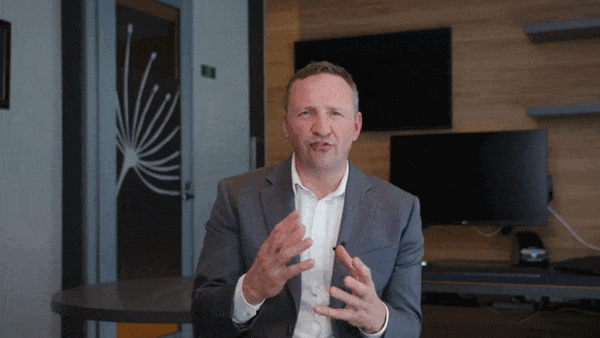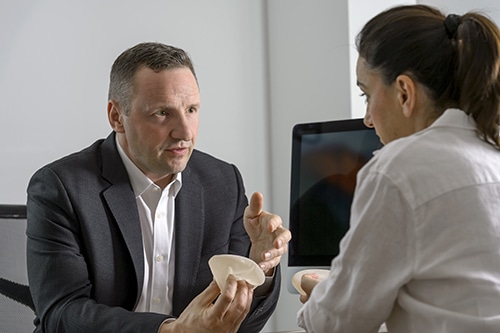Solutions for Split Tummy Muscles after Pregnancy
Diastasis recti also referred to as diastasis rectus abdominis or diastasis is a separation of rectus abdominis muscles that can occur during pregnancy. The rectus abdominis muscle is present vertically on the front side of your stomach. This is the six-pack abs region and is divided into left and right sides by linea alba (a band of tissue). Your uterus expands significantly during pregnancy which makes your abdominal muscles stretch out. This causes the thinning of the linea alba and in some cases, it is pulled apart.
Once the baby is delivered, the line alba heals on its own and comes back together in many cases. You need to know that this is highly elastic and can retract to its original position like a rubber band. However, when the tissue loses its elasticity, the gap between the abdominal muscles might remain separated for some women. This condition is known as diastasis recti. Generally, women can spot diastasis if their belly sticks above or below the belly button.
Having proof of split tummy muscles with a minimum gap of 3cm is one of the criteria for the new Tummy Tuck/ Abdominoplasty Medicare Item Number – 30175.
UPDATE – New 30175 Medicare Item Number to subsidise some Tummy Tucks/ Abdominoplasties for patients with split tummy muscles
LATEST NEWS – The Australian Government has reinstated a Medicare Item Number for a Tummy Tuck– abdominoplasty for some post-pregnancy patients suffering from Diastasis Recti (Split Tummy Muscles) if you are eligible and meet the new criteria. This new 30175 Medicare Item Number – is effective from 1st July 2022. Read the 30175 Medicare Item Number factsheet.
Medicare Item Number 30175 – Radical abdominoplasty, with repair of rectus diastasis, excision of skin and subcutaneous tissue, and transposition of umbilicus, not being a laparoscopic procedure, where the patient has an abdominal wall defect as a consequence of pregnancy, if:
the patient:
- has a diastasis of at least 3cm measured by diagnostic imaging prior to this service; and
- has symptoms of at least moderate severity of pain or discomfort at the site of the diastasis in the abdominal wall during functional use and/or low back pain or urinary symptoms likely due to rectus diastasis that have been documented in the patient’s records by the practitioner providing this service; and
- has failed to respond to non-surgical conservative treatment including physiotherapy; and
- has not been pregnant in the last 12 months
the service is not a service associated with a service to which item 30165, 30651, 30655, 30168, 30171, 30172, 30176, 30177, 30179, 45530, 45564 or 45565 applies
Applicable once per lifetime – (H) (Anaes.) (Assist.)
IF you qualify for the 30175 Medicare item number you may also get a subsidy from your Health Fund. There will still be a significant out-of-pocket GAP as Private Tummy tuck– abdominoplasty surgery is NOT FREE. There is NO Free Tummy Tuck– abdominoplasty Surgery available with Dr Kernohan.
Specialist Plastic Surgeon Dr Michael Kernohan has performed hundreds of body contouring procedures on women after pregnancy or weight loss.
Take the Quiz
Why Does Diastasis Recti Happen?
Pregnancy is a challenge. It puts a lot of pressure on your stomach muscles along with the other changes that occur in the body. The abdomen comprises of left and right ab muscles that are connected with linea alba.
When your baby grows inside your belly, these muscles and linea alba are pushed outwards to create room for your baby. In the case where the linea alba becomes overstretched, it becomes increasingly difficult for the muscles to come back together. As a result, the left and right sides of the abdominals become separated and you end up with abdominal separation.
Who Gets Diastasis Recti?
Although the condition is most common in pregnant and postpartum women, it can also be seen in some men and infants. Most women get diastasis recti in the third trimester of their pregnancy. During the last few months of pregnancy, you will be dealing with increased pressure on the abdominal walls as your baby is growing. Most women don’t notice the condition until after their baby is born.
How Common Is Diastasis Recti?
It is more common than you think. Nearly 60% of pregnant women experience diastasis recti during the post-partum phase. The condition can resolve on its own within the first eight weeks after delivery for about 60% of women. Nearly 40% of women will still have this condition even six months after childbirth.
Symptoms and Causes of Diastasis Recti
Most women will not notice the signs until their baby is born. You can have diastasis recti during the pregnancy phase but it is extremely hard to determine as your abdomen is stretched out.
Common signs to spot the condition during post-partum include visible bulge or pooch above and below the belly button, jelly-like feeling in the abdomen, coning or doming while contracting your ab muscles, trouble lifting objects or performing day-to-day tasks, and feeling weak in your abdominals.
What does Diastasis Recti Feel Like?
Well for starters, it isn’t painful. However, you might experience pain due to the side effects linked with diastasis. The ab separation itself isn’t painful. It is common to experience weakness in your core while doing day-to-day tasks such as lifting a laundry basket. Some women also report a jelly-like texture in the space in between the ab muscles.
Do I have Diastasis Recti?
You can look out for common signs that signal a diastasis recti. The common signs include a bulge in the midsection that doesn’t go away even when you have lost the weight gained during pregnancy. Exercise doesn’t seem to have much impact on the bulge as well.
Another common sign is belly cones/domes that appear when you lean back. While you can check for diastasis recti on your own, it is always a great idea to consult with a healthcare professional to get a firm diagnosis.
CLICK to Download Dr Michael Kernohan’s Excess Skin Reduction Guide

Risk Factors for Developing Diastasis Recti
Many factors can increase your risk of getting diastasis recti such as:
- Multiple pregnancies
- Being pregnant when you are 35 years old or above
- Having twins
- A big baby
- An extremely petite frame
- Vaginal delivery
Diagnosis and Tests for Diastasis Recti
The process begins with a proper diagnosis. Diastasis recti can occur above, below, and at the belly button. Your doctor will use their fingers and hands to feel the gaps and muscle tone in the abdominal region.
In some cases, an ultrasound, measuring tape, or other instruments might be used for more accurate measurement. This exam is a part of your postpartum appointment before your doctor clears you for exercise.
An abdominal gap that is wider than 3 centimetres is considered diastasis recti for Medicare purposes. The gap could also be measured in finger widths such as two or three fingers separation. Your healthcare provider will recommend certain movements to help with the condition or refer you to a specialist in case additional treatment is needed.
Self-Testing for Diastasis Recti
You can test yourself for diastasis recti. Here is how to do it:
- Lie on your back, bend your knees and put your feet flat on the floor
- Lift your shoulders off the ground, keep your hand behind your head for support and look at your belly
- Move your other hand above your belly button area. Keep your palms down with your fingers pointing towards your toes
- With the help of your fingers, try to feel the gap between the abs
- Notice how many fingers can fit between your right and left ab muscles
- If you find a gap of two or more finger widths, discuss your concerns with your healthcare provider to get confirmation and proper care
Management and Treatment of Diastasis Recti
In order to fix diastasis recti, you will be asked to do gentle movements that engage your abdominal muscles. Prior to starting any sort of exercise, make sure that it is safe for diastasis recti. It is important to work with a physical therapist who has special experience in treating diastasis recti.
They will help you create a treatment plan and ensure you are performing the treatment correctly. They will start with gentle movements and gradually move to the more challenging movements at the right time. Certain movements can make the separation worse. Hence, it is important to make certain modifications during the post-partum phase:
- Do not lift anything heavy other than your baby
- While getting out of the bed, roll onto the side while getting up or out of your bed and use your arms to push yourself up
- Stay clear of activities and movements that cause your abdominal walls to push outwards
- You can also use binding devices to hold and support the belly and promote proper posture
Can Diastasis Recti Be Fixed Without Surgery?
Yes, it is possible to fix diastasis recti without surgery in some cases. Physiotherapy or exercise may help. In other cases, surgery is the only way to fix diastasis recti. Most healthcare providers will recommend opting for physical therapy and at-home exercises to help heal diastasis prior to surgical methods.
Surgery is usually performed in the case of a hernia or if you wish to get a tummy tuck– abdominoplasty.
Best Exercises for Diastasis Recti
The best exercises for diastasis recti are those that engage abdominal muscles. Most of the exercises involve deep breathing, slow, and controlled movements. However, keep in mind that most of the common ab exercises will worsen your diastasis. Prior to starting your abdominal exercises, always check in with your healthcare provider or physiotherapist.
Movements that Make Diastasis Recti Worse
Any movement that causes bulging of the abdominal wall can cause more damage. Sudden everyday movements such as jumping out of bed or sitting up from the chair abruptly can worsen the diastasis. Be mindful of how you are using your abdominal muscles as you go about your day.
The following exercise movements should be treated with caution post diastasis recti: crunches, sit-ups, planks, push-ups, yoga poses like downward dog, boat poses, and other types of yoga, double leg lifts, scissors, and other Pilates movements.
Prevention of Diastasis Recti
It is very normal and expected to have some level of muscle separation with pregnancy. There are certain things that can help lower the risk of diastasis recti:
- Make sure your weight gain is within the healthy range. Keep yourself active and have a healthy diet to stay on track
- Make sure to maintain a proper posture while sitting and standing
- Practice deep breathing that causes your chest to expand along with your belly
- Stay clear of core exercises that put pressure on your abdominal muscles
- Avoid lifting heavy weights as it can put immense strain on your abdominal muscles
- Always leg roll while getting out of bed during the pregnancy and postpartum phase
Treatment for Diastasis Recti
The time it takes for the diastasis recti to heal depends on the extent of ab separation and your consistency with the post-partum exercises that focus on core strengthening. Several weeks after your baby is born, this gap will start to close as your muscles slowly gain back their strength. If you make the right modifications to your lifestyle as per the instructions of a healthcare professional, you will begin to notice massive progress. In some cases, this condition doesn’t heal on its own and requires surgical intervention.
Can I Get Diastasis Recti Again?
You can heal your initial condition and get it again. In fact, your risk of getting diastasis recti increases with each pregnancy. This happens due to the continuous stretching of linea alba over time. Eventually, it will lose its elasticity and won’t be able to regain its original shape. That is when plastic surgery procedures come in handy. A lot of women opt for a tummy tuck– abdominoplasty to fix this functional condition along with getting rid of the excess skin post-childbirth.
Am I Too Late to Fix Diastasis Recti?
You are not too late to repair your diastasis recti. With the help of proper exercise done under the supervision of a professional, you will be able to fix your condition. In some cases, surgery is needed. There is always a way to fix diastasis recti.
Risks and Potential Complications from Diastasis Recti
The complication rate is low. However, in severe cases of diastasis recti, complications might include umbilical hernia, increase in back pain, pain during sex, urinary incontinence, and pelvic and hip pain.
When to See a Healthcare Provider?
Diastasis recti is a fairly common condition that can be treated easily. If you have more than a two-finger gap between your abdominal muscles or are experiencing consistent pain, connect with your healthcare provider for a proper diagnosis. You might want to see a physical therapist or pelvic floor specialist to help with your journey. In extreme cases, surgical intervention might be needed.
Diastasis recti can make you look pregnant months and years after you have delivered your baby. Make sure to discuss all your concerns with your healthcare provider so they can do the diagnosis and recommend the appropriate treatment route.
Further Reading about Body Procedures with Dr Kernohan
- Read Dr Kernohan’s Tummy Tuck/ Abdominoplasty Surgery Page
- Read Dr Kernohan’s Post Weight Loss Contouring Procedure Page
- Read Dr Kernohan’s Post Pregnancy Procedures Page
- Read Dr Kernohan’s Blog about Combining Abdominoplasty with Hernia Repair Surgery







